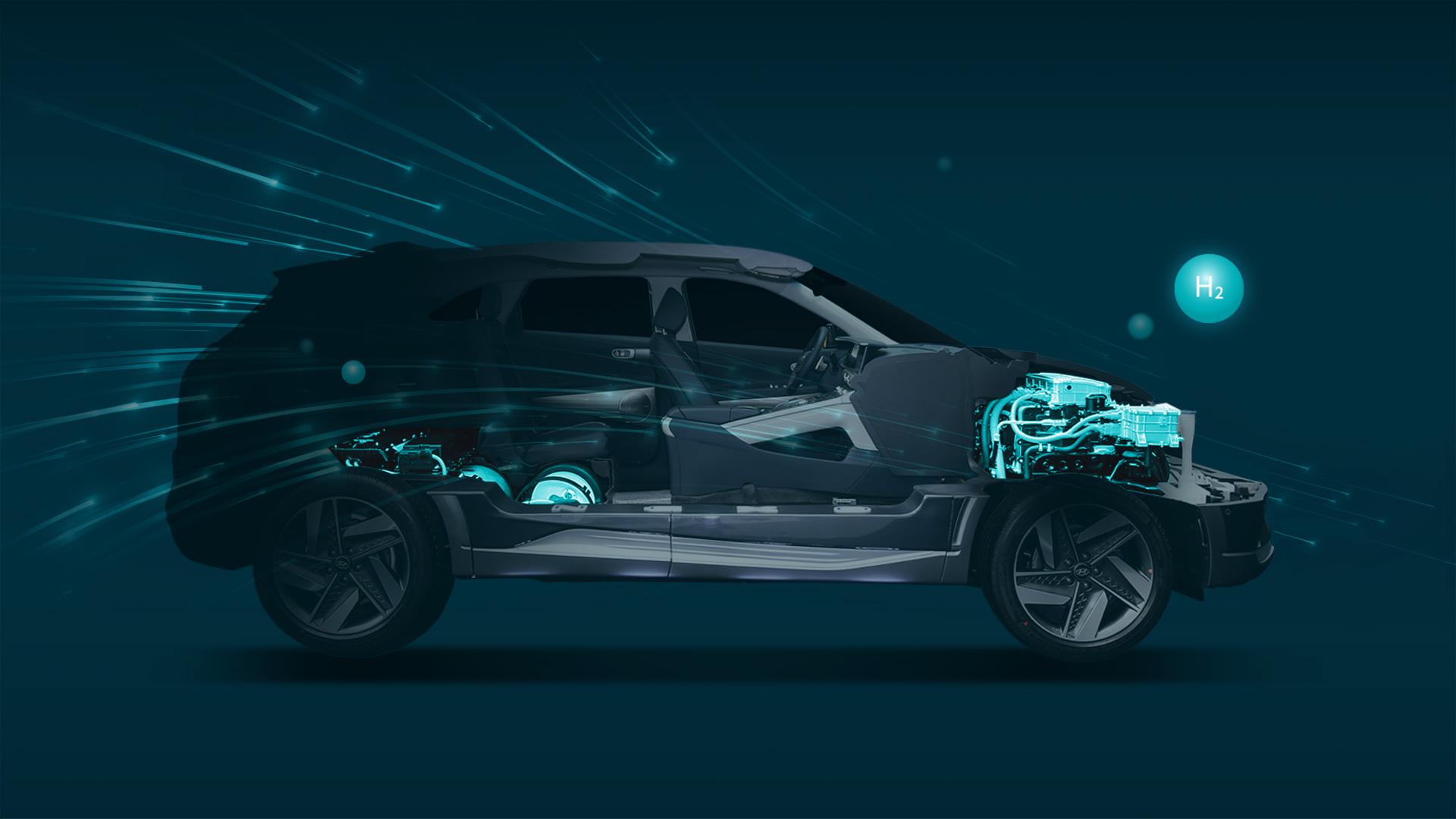
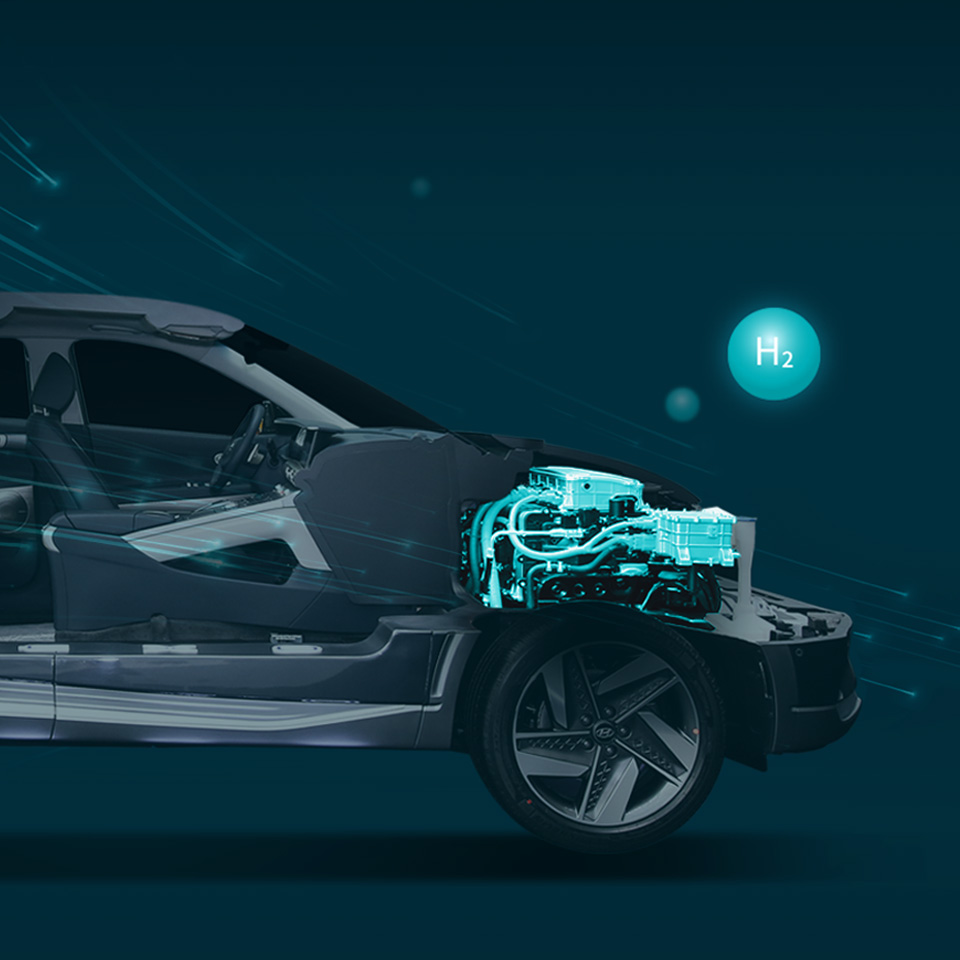


Hydrogen society is an eco-friendly society, which is powered by hydrogen. Reducing carbon emissions by eliminating fossil fuels can slow global warming, and it will keep us from fine dust - an unwelcomed visitor in the spring. Fuel cells are a key technology to realize an eco-friendly hydrogen society. [Hyundai Motor Group: Vision for Hydrogen Part 2] will explore the principles and applications of fuel cell systems that produce electric energy using hydrogen.
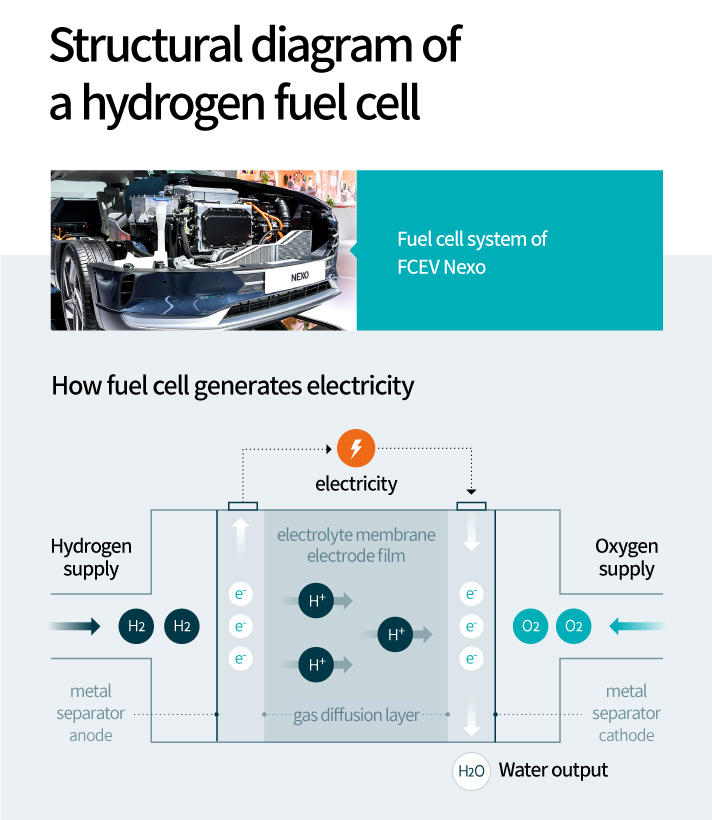
Even in a hydrogen society, electricity is a key source that would power the world as it does now. The difference is that in a hydrogen society, electricity will be generated from hydrogen. And fuel cells get to play a huge role here.
A fuel cell refers to a device that directly converts and generates electricity through electrochemical reactions with oxygen in the atmosphere using hydrogen as a power source. Here is how it works: the hydrogen supplied to the anode is separated into hydrogen ions and electrons, and then the hydrogen ions move to the cathode through the electrolyte layer and the electrons to the cathode through the external circuit. In this process, electrons generate electricity, and oxygen ions and hydrogen ions met at the cathode produce water and heat. In a fuel cell, hydrogen and oxygen are combined through a chemical reaction to generate electricity, water, and heat.
Generally, a fuel cell consists of an anode, an electrolyte layer, and an air electrode, an electricity production device that holds stacks of these cells, and an electrical/mechanical peripheral device (Balance of Plant, BOP). The BOP houses electrical devices such as system controllers and power converters, and the machines for optimized durability and operation such as fuel/air supply, heat exchanger, and water treatment systems.
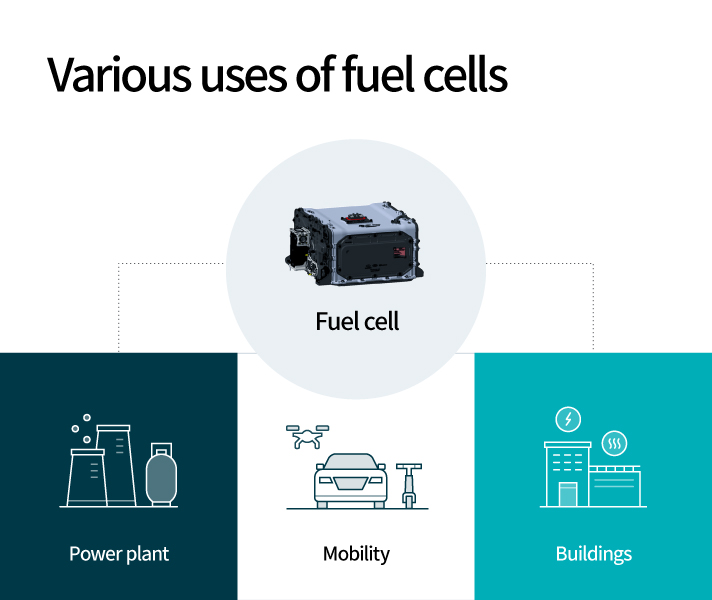
Fuel cells have long been used in the aerospace field. It is well known that astronauts used fuel cells on the Apollo 11, the first mankind to land on the moon. In recent years, Hyundai Motor Company succeeded in mass-producing hydrogen-electric vehicles using fuel cell systems for the first time in the world, drawing worldwide attention. This became the moment people actually started to use fuel cells in their daily lives.
The mass production of hydrogen-electric vehicles seems like the application of fuel cells is only limited to automobiles, but it is never true. The amount of electricity generated by fuel cells can be adjusted depending on the size and number of cells, so it can be used for small and large mobility other than automobiles, and it can even support a huge power plant that produces a large amount of electricity. Of course, it can also be used in the houses, apartment buildings, and other places that we live in.
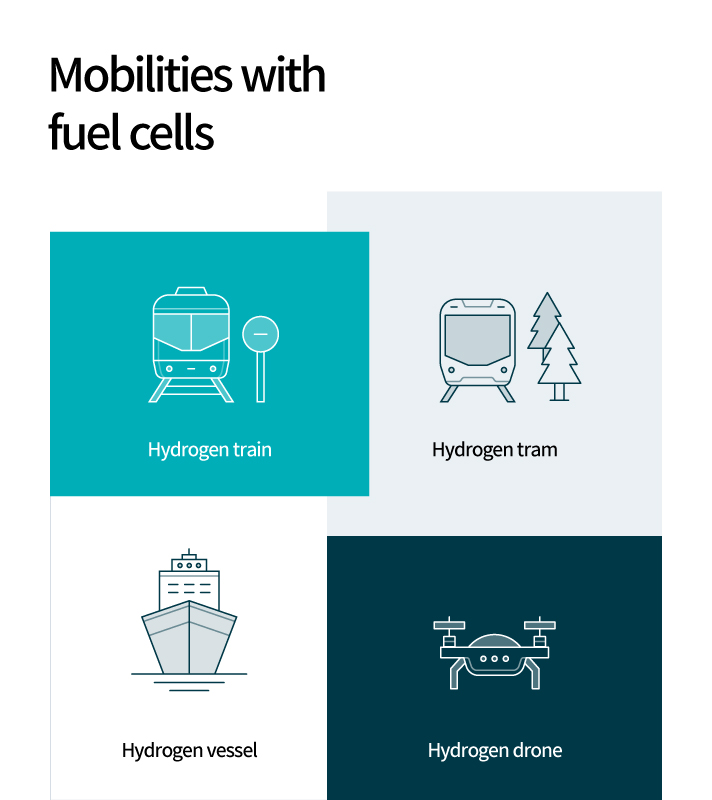
Fuel cells basically use electricity, so most electric vehicles could utilize fuel cells. In fact, mobility such as hydrogen trains, hydrogen trams, hydrogen ships, and hydrogen drones powered by fuel cells are actually under development.
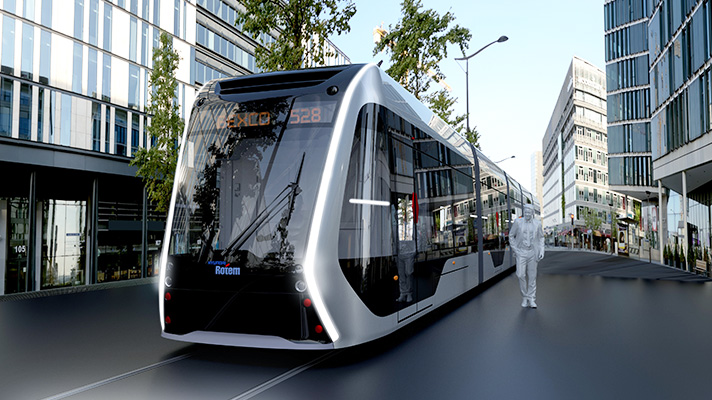
Hyundai Motor Group, which succeeded in mass-producing hydrogen-electric vehicles for the first time in the world, is introducing fuel cell systems not only for hydrogen electric vehicles and heavy hydrogen-electric trucks but also for various mobility. Hyundai Motor Company began co-developing fuel cell construction equipment with Hyundai Construction Equipment, and they are planning to launch fuel cell forklifts and excavators in 2023. In addition, through a business agreement with Gangwon Provincial government, the company is developing eco-friendly hydrogen fishing boats equipped with fuel cells.
Hyundai Rotem is leading the development of hydrogen-electric trains. Last November, in cooperation with the Korea Railroad Research Institute, they agreed to conduct research for the development and commercialization of hydrogen-electric trains, and the company signed a business agreement with the Ulsan City government for the hydrogen-electric tram pilot project. Hyundai Rotem is expected to develop its performance test platform vehicle for the hydrogen-electric tram within this year.
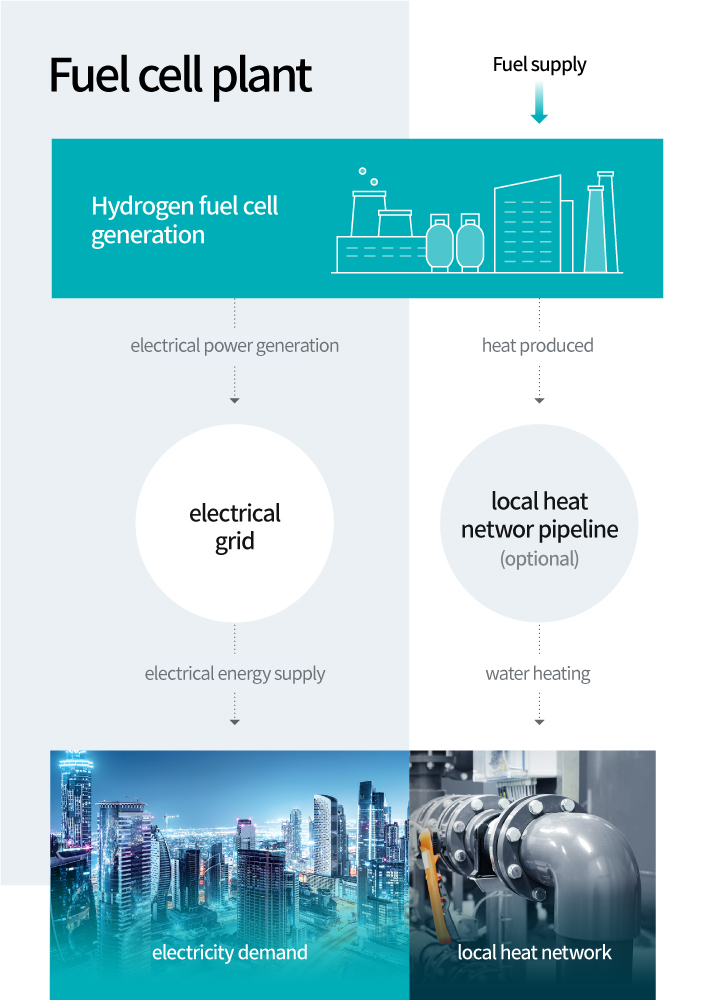
Currently, the field where fuel cells are most common is in the power generation sector. Korea South-East Power Co.Ltd. was the first to establish fuel cell power plants, and they began to be widely utilized since 2012, starting with the 250kW-plant in 2006. In addition to these who operate fuel cell power plants in Seongnam and Ansan in Gyeonggi-do, Korea East-West Power in Ilsan and Ulsan, and POSCO in Seoul, Incheon, and Gyeongbuk are operating fuel cell power plants.
Fuel cells used in power plants also produce electricity through a chemical reaction between hydrogen and oxygen. The electric energy produced in this way is boosted and sent to a consumer that requires it. What distinguishes it from that in the mobility sector is that it focuses on high efficiency and power generation through continuous operation over a long time. In addition, it is possible to produce steam using waste heat, and if there is demand nearby, it can also supply heat energy by getting connected to the local heat networks.
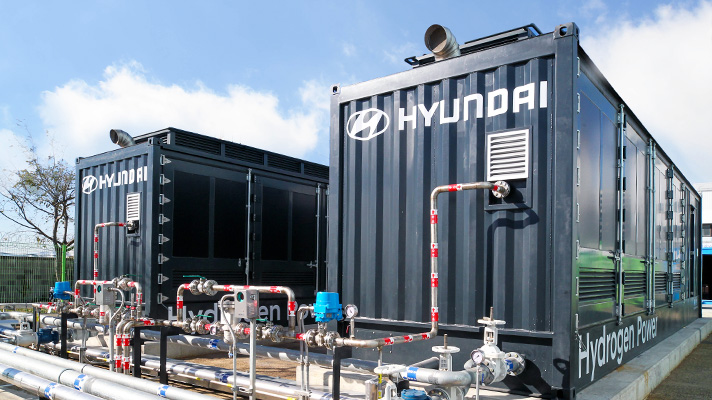
Hyundai Motor Company, which developed hydrogen-electric vehicles and has the know-how on fuel cells, also built a fuel cell power plant to expand the hydrogen industry and started pilot operation this year. The 1MW-fuel cell power generation system devised by Hyundai Motor Company consists of two container modules capable of producing 500kW of electricity, and the most notable feature is that it utilized the fuel cell module equipped for hydrogen-electric Nexo. The annual electric energy production of the facility is about 8,000MWh, which is the amount that can supply power to about 2,200 households, based on monthly consumption of 300kWh.
The fuel cell container module derived from Nexo developed by Hyundai Motor has the capacity to generate tens to hundreds of megawatts depending on the number of containers. Not only that, in the past, most of the fuel cells for power generation in Korea were based on overseas technology, so replacement and maintenance costs were high. However, the fuel cell power plant, which Hyundai is piloting, was developed with its own technology. As the future domestic fuel cell power generation market expands, it is expected to lower the fuel cell prices for power generation.
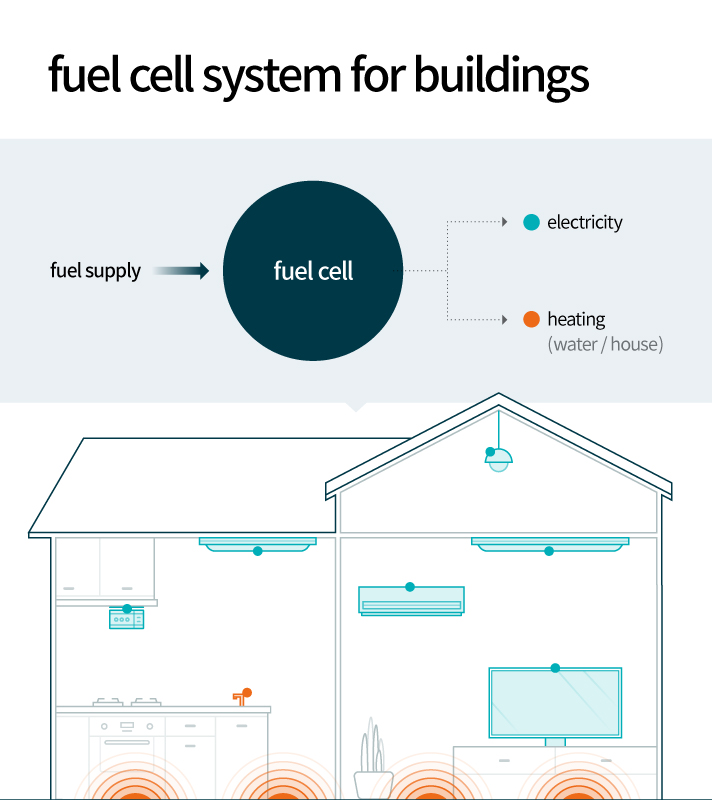
Fuel cells can also be used for homes that mainly use electric energy. Japan is the country where household fuel cells are widely distributed most. Japan conducted research on the commercialization of fuel cells for homes in the late 1990s and began supplying fuel cells to households in 2009. During the 2011 Great East Japan Earthquake, the usage of fuel cells for households increased significantly, and the advantage of being able to produce electricity and heat energy directly at home without relying on a power plant attracted many as a way to overcome the unstable energy supply due to natural disasters. In addition, the advantage of using a domestic fuel cell is that it is more efficient than using a power plant. When electricity is produced through an existing thermal power plant, etc., energy losses occur while transferring the electric and thermal energy to each customer. When using a fuel cell at home, on the other hand, the generated electrical and thermal energy can be used immediately, minimizing energy loss. In other words, it has excelled in not only eco-friendliness but also energy saving. Since 2006, Korea has also been supplying fuel cells for households with less than 1kW, mainly for government projects, and recently, the supply trend is changing with fuel cells for buildings with 5kW and higher.
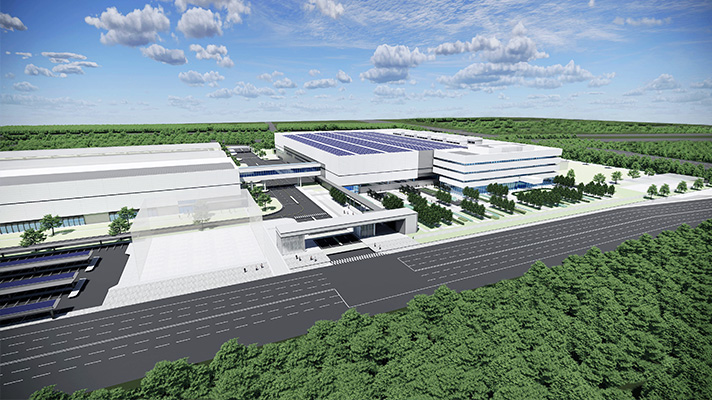
The fuel cell system is growing as a key industry of the future as well as an energy solution that will take responsibility for an eco-friendly hydrogen society. Hyundai Motor Group is taking the lead in the development, production, and distribution of fuel cells to realize sustainable hydrogen economy development and global carbon neutrality. The company is mass-producing the hydrogen-electric vehicle Nexo with fuel cell system and hydrogen-electric heavy truck, and selling them worldwide. Last September, the company exported the fuel cell system to hydrogen storage companies in Switzerland and energy solution startups in Europe. Also, back in March, the company held a groundbreaking ceremony for the fuel cell production facility in Guangzhou, China. Hyundai Motor Group's HTWO Guangzhou will be completed in the second half of 2022 and is expected to produce 6,500 fuel cells per year. As a “first mover” equipped with the world's best fuel cell technology, the Hyundai Motor Group is securing leadership in the global fuel cell industry.
* In the following [Hyundai Motor Group Hydrogen Vision Part 3], we will explore major activities of Hyundai Motor Group to build the hydrogen supply infrastructure.
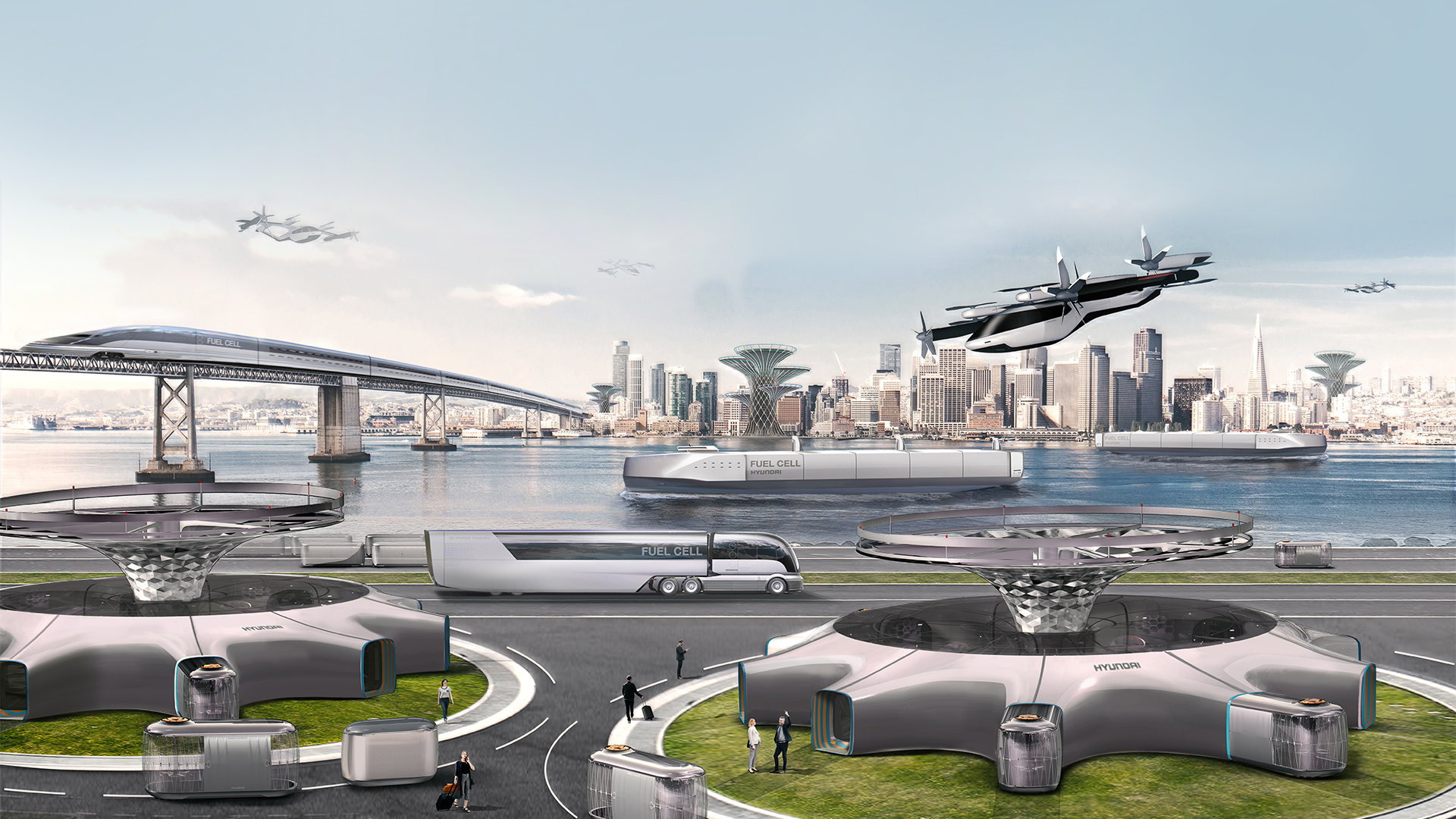
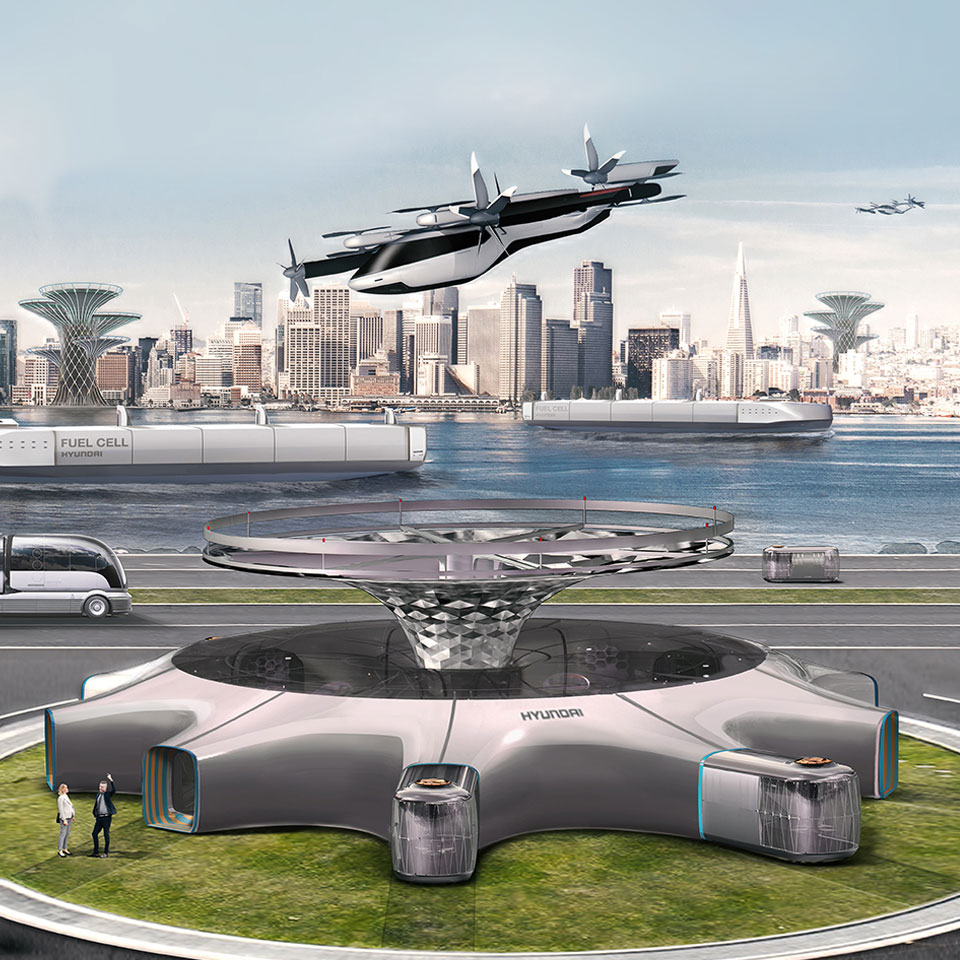
A Paradigm Shifter, Shifting Towards a Hydrogen Society
2022.01.17 12min read